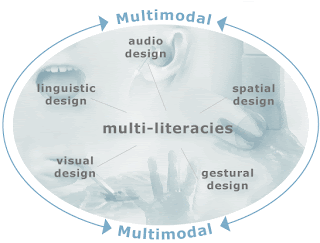As a stubborn schoolgirl, graduating in 2012, my thoughts on
literacy were always quite basic. My personal opinion of literacy was simply
how we read and write, a vital and fundamental tool to learn to prepare for
your adult life and the big wide world. However, on embarking on my journey to
studying literacy at University, I have already been opened up to a wider, more
open minded way of thinking and defining literacy within the classroom context
and everyday life in the 21st century.
It has come to my attention after
experiencing the first lecture, that literacy is a much broader concept than I
had originally thought. It is not only a single body of knowledge, but rather a
varied set of social practices, advanced by the growing digital media of 2013.
However, much to my surprise it’s clear that literacy can be seen all around us
in everyday life, through multimedia, visual, auditory, oral, linguistic,
spacial, gestural and tactile means, (Kalantzis & Cope, 2012).
So, as I sit here posting about my changed
opinion of literacy, I become suddenly aware of all the different literacies I
am experiencing presently. In the everyday life of Claudia Vince, there is a constant
multitasking of work and life, whilst at the same time, almost always keeping
in touch with people via text and Facebook and checking or posting in other
social networking sights such as Instagram and Tumblr. Despite the fact that
being born a female, it is almost destined that I succeed in the art of
multitasking, it astounds me to realize that I am unconsciously using many
different forms of literacy within my day to day activities.
"We read the world through images, symbols, colours, signs, body language and in the gaps and margins as well as through printed text." (Hughes, 2007)
Well readers, say goodbye to the old fashioned classroom practices of just plain reading and writing, this technologically advanced era is filled with the use of multimedia literacices. So that leaves us with a perplexing question, is being ‘illiterate’ a thing of the past?
References:
Hughes, J. (2007). Multiple literacies.
Retrieved from Teaching language and literacy, K-6: Retrieved from:
Kalantzis, M., & Cope, B. (2012). Literacies. Melbourne:
Cambridge University Press. Chapter 1: Literacies on a human
scale pp.21-40.
Mutlimodal literacies [image] Retrieved from: http://faculty.uoit.ca/hughes/Contexts/MultipleLiteracies.html

No comments:
Post a Comment